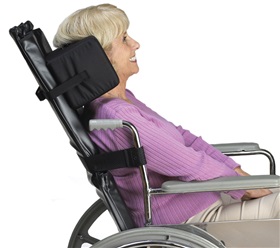
I was recently caring for an elderly gentleman who was getting weaker and walking less and less. He lives in a skilled nursing facility. Whenever one of my patients begins to move less, I begin to worry more. Once the elderly begin to really slow down, it’s difficult to for them to regain any strength and muscle mass that they lose while immobile. Just sitting, or lying in bed, makes everything more difficult: It’s difficult to keep the digestive system running well. It’s difficult to prevent infections like pneumonia. And staying in one position always leads to a risk of pressure ulcers, commonly known as “bedsores.”
Bedsores are terrible: They form when the thin, delicate skin of an elderly person is under pressure for a long period. They can get infected and/or weepy. Once they form, they can be difficult to heal. And they’re incredibly painful. I wouldn’t wish a bed sore on my worst enemy, and I do everything I can to prevent them in my patients. If one of my patients does get a bedsore, I pester nurses and caregivers to treat the wounds properly, and to reposition the patient at least once every two hours. This is more trouble for caregivers, and sometimes patients don’t want to move because they find it painful or tiring. But it has to be done. Otherwise, the bedsore will only get worse.
So this was my worry with my elderly gentleman: He would spend nights in bed, and then days just sitting in a wheelchair or in a recliner. His risk of developing bedsores would increase exponentially. Accordingly, I asked the management of his residence to get him a reclining wheelchair.
A couple days later, I heard back from the residence: They said that their occupational therapist (OT) had reviewed the case and that the OT didn’t think a reclining wheelchair was necessary.
I think I can guess the OT’s thought process: The elderly gentleman didn’t have any problems yet. So why did he need a specialized piece of equipment?
Here’s where I think that way of thinking is wrong: We should not wait until there is a problem. We should prevent the problem from developing, if we can.
When you have a frail, elderly person who is having lots of trouble getting around, it’s important to get him out of bed each day, just to move around and retain what strength he can. It’s most convenient to transfer the patient from bed to a wheelchair. But if the patient really can’t walk any more, then that patient should use a reclining wheelchair if at all possible. This will make it possible for the patient to change positions more easily while out of bed.
This isn’t a super expensive solution: Most reclining wheelchairs cost only $300 or $400. Many are even available on Amazon. Honestly, when it comes to galactic medical equipment prices, that’s a bargain. In the long run, a reclining wheelchair makes it easier for everyone: The patient is less likely to develop miserable bedsores. Nurses and caregivers don’t have to muscle the patient around to change positions. Everyone wins.
So if you have an elder who’s at the stage of just moving to bed to wheelchair and back, asking about a reclining wheelchair for your elder. It’s not a luxury. A reclining wheelchair is just common sense.
Elizabeth Landsverk, MD

Elizabeth (Dr Liz) has over twenty years of experience in providing medical care to the elders. She is board-certified in Internal Medicine, Geriatric Medicine and Palliative Care Medicine. Dr Landsverk founded ElderConsult Geriatric Medicine, a house calls practice, to address the challenging medical and behavioral issues often facing older patients and their families.

